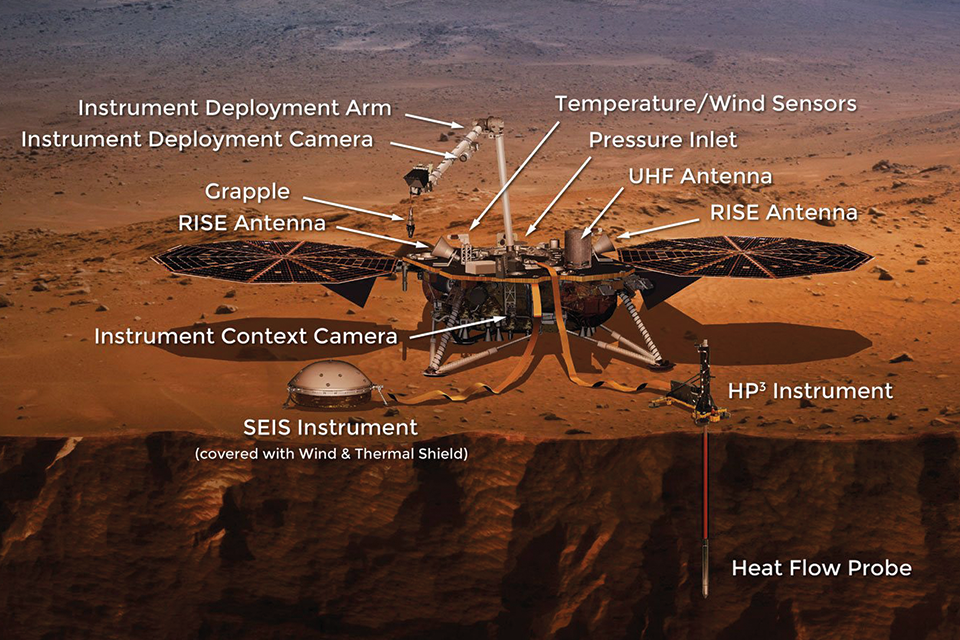InSight: the Mars robotic lander
InSight is investigating the interior structure and composition of Mars, uncovering how a rocky body forms and evolves to become a planet.

Artist's impression of InSight. Credit: NASA.
InSight, short for ‘Interior Exploration using Seismic Investigations, Geodesy and Heat Transport’, is a NASA robotic mission that successfully landed on Mars at 19:53 GMT on 26 November 2018.
Its primary objective was to place a stationary lander (built by Lockheed Martin) on the surface of Mars to study its early geological evolution. This helps scientists understand the early formation of the Solar System’s terrestrial planets. The lander has three instruments on board, which are:
- A Seismometor to conduct a Seismic Experiment for Interior Structure (SEIS)
- Heat Flow and Physical Properties Package (HP3)
- Rotation and Interior Structure Experiment (RISE)

InSight's instruments. Credit: NASA
These instruments measure Mars’ seismic activity, the amount of heat flow from the interior, and the size and physical state of Mars’ iron-rich core.
The Seismic Experiment for Interior Structure (SEIS) is led by France in partnership with the UK, Germany and Switzerland. The UK (Imperial College London and Oxford University) provided the short period seismometer (SEIS-SP) element of the instrument.
The seismic activity package assesses the deep interior structure of Mars. This includes the capturing of signals from marsquakes, meteorite impacts, and the tidal forces by Mars’ moon Phobos. The SEIS instrument is even capable of tuning in to tremors smaller than a hydrogen atom!
As of May 2022, it has been reported that the InSight Mars lander is gradually losing power and is expected to become inoperative by December 2022, which will conclude a mission that has successfully detected more than 1,300 marsquakes and located quake-prone regions of Mars.
InSight detected the largest quake ever observed on another planet: an estimated magnitude 5 temblor that occurred on 4 May 2022. Download here to listen.
Updates to this page
-
Updated June 2022.
-
Update to say that the mission successfully landed on Mars.
-
update of information
-
Page content updated.
-
First published.